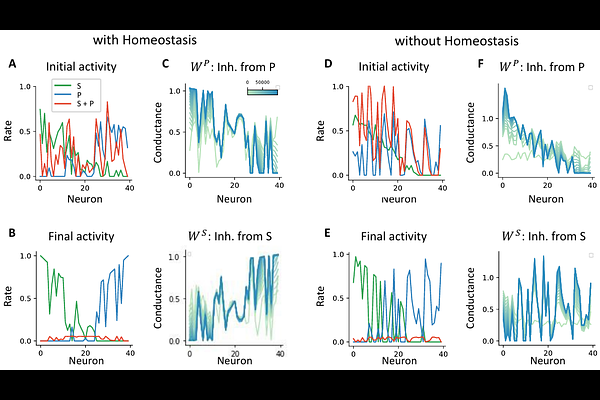Global error signal guides local optimization in mismatch calculation

Global error signal guides local optimization in mismatch calculation
Meng, J. H.; Wang, X.-J.
AbstractCorollary discharge denotes internal signals about the expected sensory consequences of one\'s own actions, leading to attenuation of sensory responses caused by self-produced stimulation. To investigate the underlying neural circuit mechanism, here we introduce a biologically plausible three-factor learning rule, where a global signal guides the updating of local inhibitory synapses to enable the computation of mismatch between a stimulus and its expectation or prediction. We show that our network model, endowed with positive and negative prediction error neurons, accounts for the salient physiological observations of motor-visual and motor-auditory mismatch responses in mice. Moreover, the model predicts that learning induces a bimodal distribution in activity correlation with stimulus and movement-induced prediction, supported by our analysis of neural data from a recent experiment. These results link global modulation to local learning for predictive error computation in the sensory areas, and shed insights into how disrupting inhibition impairs mismatch computation in specific ways.